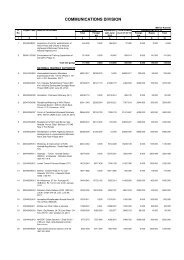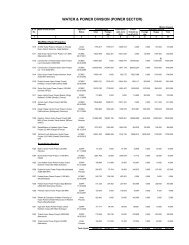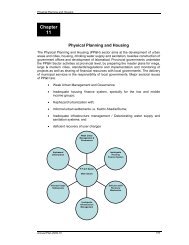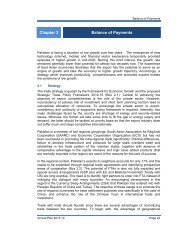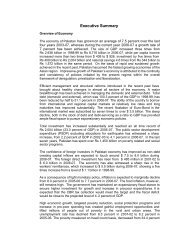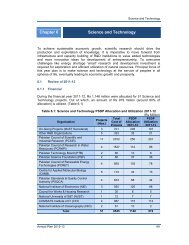Manual for Development Projects - Planning Commission
Manual for Development Projects - Planning Commission
Manual for Development Projects - Planning Commission
You also want an ePaper? Increase the reach of your titles
YUMPU automatically turns print PDFs into web optimized ePapers that Google loves.
Chapter-7<br />
of those sponsoring ministries/ divisions, and executing agencies who are directly or indirectly involved<br />
in project <strong>for</strong>mulation, appraisal/approval and implementation, i.e. on daily basis at the project level,<br />
monthly by the executing agency and quarterly by the sponsoring agency. The internal monitoring unit is<br />
to work like an eye of the project management <strong>for</strong> ensuring the successful and timely completion of the<br />
project. A close collaboration and understanding between the project management and the monitoring<br />
unit is very important. The essential thing is the quick taking of appropriate decisions on the part of the<br />
project management to remove the bottle-necks and solve the problems.<br />
(ii) External Monitoring<br />
"External Monitoring" which serves the objectives of higher level authorities outside project management<br />
is always undertaken by an outside central agency like the <strong>Projects</strong> Wing of the <strong>Planning</strong> and<br />
<strong>Development</strong> Division. This is done to watch the progress of development projects to gain inside<br />
knowledge <strong>for</strong> the benefit of the planning agency from the macro-planning point of view and that of the<br />
sponsoring agency <strong>for</strong> strategic feed-back on the progress of implementation, its impact on problems and<br />
removal of bottlenecks. Accordingly, as per the Rules of Business, 1973 issued by the Cabinet Division<br />
(updated upto February 1985), progress monitoring of all major development projects/ programmes,<br />
identification of bottle-necks and initiation of timely action is included in the charter of duties of the<br />
<strong>Planning</strong> and <strong>Development</strong> Division (Cabinet Division's d.o. letter No. 52/CF/81 dated February 26, 1981<br />
also refers (Annexure-XLI). The external monitoring unit which works alongwith the internal monitoring<br />
system, provides a link between the higher level authorities and the project management. The internal<br />
monitoring unit has to feed the external monitoring unit with necessary in<strong>for</strong>mation. The external<br />
monitoring unit makes ef<strong>for</strong>ts <strong>for</strong> the preparation of special review reports and collection of in<strong>for</strong>mation<br />
on the spot, through field visits, to counter-check the validity of in<strong>for</strong>mation being provided by the field<br />
staff.<br />
Monitoring Indicators<br />
7.27 Conceptually, monitoring indicators are specific yardsticks which can measure progress or changes<br />
in the results, achievements (output, effect, or impact) of a project/programme or a national plan. The<br />
indicators are thus specific measures of the degree to which an activity or a project is producing its<br />
outputs and achieving its objectives. The indicators can also be stated as specific targets, to be achieved at<br />
specific points in time during the implementation stage of an activity or can be categorized by type, such<br />
as, output or impact indicators. The indicators can be direct or indirect (proxy) - where direct<br />
measurement is not feasible. The main monitoring indicators can be identified as under:<br />
i) Primary<br />
Completion of preliminaries like drawing, designing,tendering etc as per schedule.<br />
Financial utilization viz-a-viz PSDP allocations, fund releases and item-wise cost utilization.<br />
http://hd2/pc/popup/ch7_p.html<br />
Page 17 of 26<br />
9/23/2010




